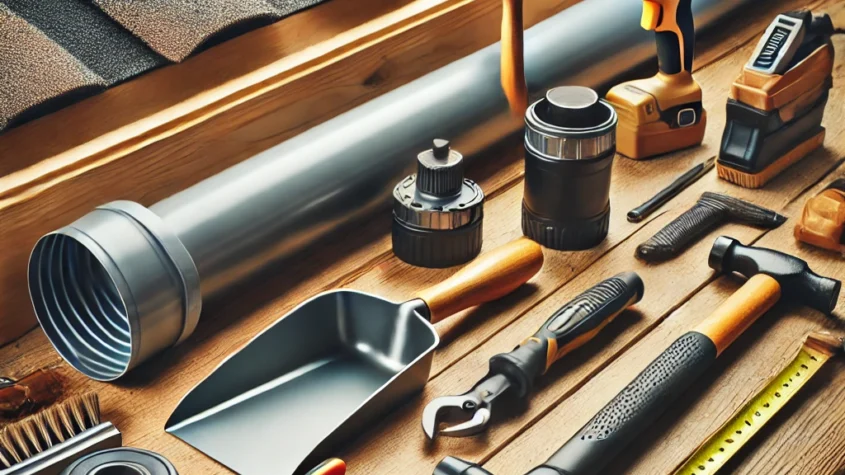
Metal roofing cutters are essential tools for anyone working with metal roofing materials. These cutters provide precise cuts that ensure clean edges and fit, which are crucial for a successful installation. Whether through manual shears or powered options, they make the process faster and more efficient, saving time and reducing waste.
Choosing the right metal roofing cutter can significantly impact the quality of a roofing project. Different types of cutters serve various purposes, from basic hand tools suitable for small jobs to electric shears designed for heavy-duty tasks. Understanding the options available helps in selecting the best tool for specific needs, ensuring optimal performance and results.
Investing in a high-quality metal roofing cutter not only enhances the quality of work but also improves safety on the job site. By using the right cutter, users can minimize the risk of accidental injuries and achieve more professional results.
Essentials of Metal Roofing Cutters
Metal roofing cutters are crucial tools for anyone working with metal roofing materials. Understanding the various types and important features helps in selecting the right cutter for specific tasks.
Types of Metal Roofing Cutters
There are several types of metal roofing cutters available, each designed for particular applications:
- Manual Cutters: These hand-operated tools offer portability. They are suitable for small jobs and provide a precise cut without the need for electricity.
- Electric Shears: Ideal for larger projects, electric shears cut through metal quickly and efficiently. They reduce fatigue during extended use.
- Nibblers: Nibblers remove small sections of metal as they cut. This allows for intricate designs and reduces the risk of damaging the surrounding material.
- Band Saws: Effective for straight cuts, band saws are ideal for thicker materials. They provide clean and accurate cuts while minimizing metal shavings.
Each type serves a distinct purpose, making it essential to choose according to the specific needs of the roofing project.
Important Features to Consider
When selecting a metal roofing cutter, several features should be evaluated for optimal performance:
- Blade Quality: High-quality blades ensure durability and precision. Materials like carbide or high-speed steel are preferable.
- Cutting Capacity: It is vital to check the cutter’s specifications for the maximum thickness and width of metal it can handle.
- Weight and Portability: Lighter models are easier to handle, while heavier models may provide more stability and control.
- Safety Features: Look for cut-off switches, blade guards, and other safety mechanisms to protect the user during operation.
Choosing a cutter with the right combination of these features can significantly impact efficiency and effectiveness in metal roofing tasks.
Usage and Maintenance
Proper usage and maintenance of metal roofing cutters ensure their efficiency and longevity. Understanding the operating procedures, adhering to safety precautions, and following maintenance guidelines is essential for optimal performance.
Operating Procedures
When operating a metal roofing cutter, it is important to follow specific procedures to achieve clean and accurate cuts. First, mark the cutting lines clearly on the metal sheet. Secure the sheet on a stable surface to prevent movement during cutting.
Adjust the cutter settings based on the metal thickness, ensuring the blade is sharp and appropriate for the material type. Start the machine and apply steady, consistent pressure without forcing the cutter, allowing it to perform efficiently. After completing the cut, inspect the edges for smoothness, and remove any burrs using a deburring tool.
Safety Precautions
Safety is paramount when using metal roofing cutters. Operators should wear appropriate personal protective equipment (PPE), including gloves, safety glasses, and hearing protection. Proper clothing, such as long sleeves and closed-toe shoes, is essential to protect against metal shavings and sharp edges.
Before starting the cutter, inspect power cords and ensure the machine is in good working order. Keep hands and other body parts clear of cutting paths to prevent injuries. Be aware of the surrounding environment to avoid tripping hazards and ensure ample lighting during operation.
Maintenance Guidelines
Regular maintenance is vital for the longevity of a metal roofing cutter. Routine checks should include inspecting the sharpness of the blade. Dull blades can lead to jagged cuts and strain the motor.
Lubricate moving parts according to the manufacturer’s recommendations to prevent wear and tear. Clean the machine after each use, removing metal shavings and debris to minimize damage to components. Store the cutter in a dry, secure location to protect against moisture and accidents. Regular servicing by a qualified technician is also recommended to address any potential issues early.
Recycling Drop Off Near Me: Your Guide to Local Eco-Friendly Solutions
Finding a nearby recycling dropoff location can be a crucial step in contributing to envir…









